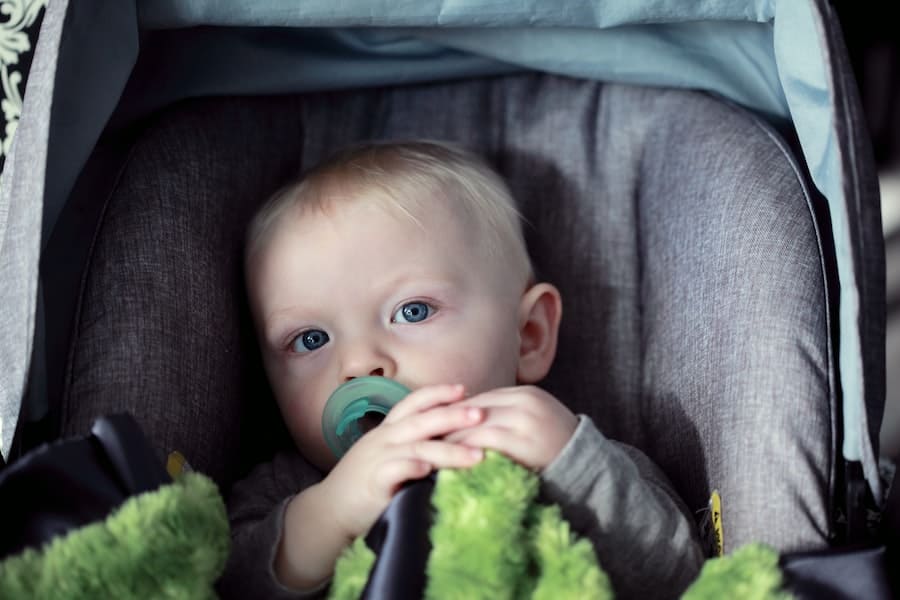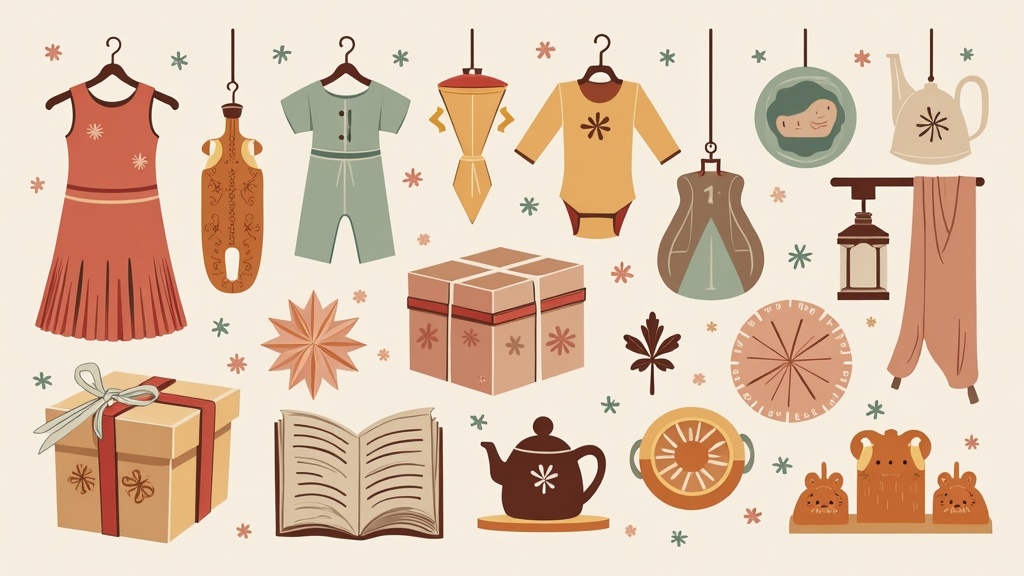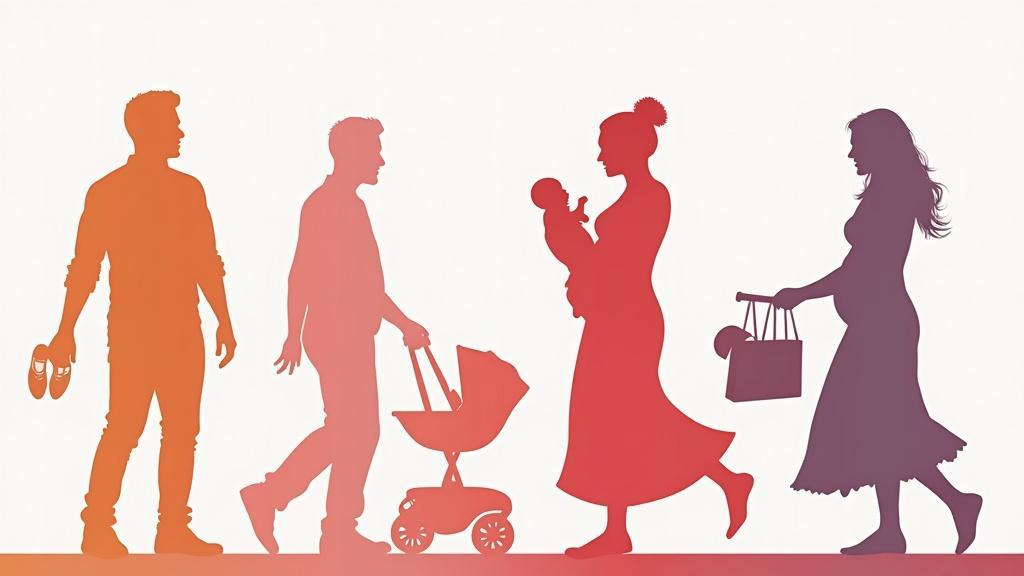Pacifiers, also known as soothers or dummies, are small, nipple-shaped devices made of rubber, silicone, or latex that are designed to be sucked on by babies. They have been used for centuries as a way to soothe and calm infants. Pacifiers are important for babies because they provide comfort and can help them self-soothe. They can also be a useful tool for pain relief and can help premature babies with their development.
Key Takeaways
- Pacifiers can be important for soothing and calming babies.
- Pacifiers can lead to dependency and oral health risks.
- Pacifiers can affect breastfeeding, but can also be used in conjunction with it.
- The right time to introduce a pacifier varies for each baby.
- Choosing the right type of pacifier involves considering materials and shapes.
Pros of Pacifiers: Soothing and Calming Effect
One of the main benefits of pacifiers is their soothing and calming effect on babies. Sucking on a pacifier can help babies relax and feel secure. The rhythmic sucking motion can mimic the feeling of being breastfed, which can be comforting for babies. This can be especially helpful during times of stress or when babies are having trouble falling asleep.
Pacifiers can also be beneficial for premature babies. Premature babies often have underdeveloped sucking reflexes and may struggle with breastfeeding or bottle feeding. Using a pacifier can help these babies practice their sucking skills and improve their ability to feed. It can also provide them with comfort and help them feel more secure in the neonatal intensive care unit (NICU).
In addition to providing comfort, pacifiers can also be used as a tool for pain relief. Sucking on a pacifier has been shown to reduce pain in babies undergoing medical procedures, such as vaccinations or blood draws. The sucking motion releases endorphins in the brain, which are natural pain relievers. This can help babies feel less discomfort during these procedures.
Cons of Pacifiers: Dependency and Oral Health Risks
While pacifiers have their benefits, there are also some potential drawbacks to consider. One of the main concerns with pacifiers is that they can create dependency in babies. Babies who rely too heavily on pacifiers may have difficulty self-soothing without them. This can become a problem if the pacifier is lost or not readily available. It can also interfere with the development of other self-soothing techniques, such as thumb sucking or using a lovey.
Another concern with pacifiers is the potential risk to oral health. Prolonged and frequent use of pacifiers can lead to dental problems, such as misalignment of the teeth or an overbite. This is especially true if the pacifier is used beyond the age of two or if the child continues to use it during the day. The constant sucking motion can put pressure on the developing teeth and jaw, causing them to shift out of alignment.
To minimize the risks of pacifiers, it is important to use them in moderation and to encourage other self-soothing techniques as well. Limiting pacifier use to sleep times and gradually weaning your baby off of it as they get older can help prevent dependency. It is also important to regularly check the condition of the pacifier and replace it if it becomes worn or damaged.
Pacifiers and Breastfeeding: How They Affect Each Other
| Topic | Data/Metrics |
|---|---|
| Pacifier Use |
|
| Breastfeeding |
|
| Effects of Pacifier Use on Breastfeeding |
|
| Benefits of Pacifier Use |
|
| Recommendations |
|
One concern that many breastfeeding mothers have is whether using a pacifier will interfere with breastfeeding. While there is some evidence to suggest that pacifier use in the early weeks of breastfeeding can lead to nipple confusion, this is not always the case. In fact, many breastfeeding experts now recommend using a pacifier as a tool for soothing during times when breastfeeding is not possible or practical.
If you choose to use a pacifier while breastfeeding, there are some tips that can help minimize the risk of nipple confusion. It is recommended to wait until breastfeeding is well-established before introducing a pacifier, usually around 3-4 weeks. This allows your baby to develop a strong latch and feeding routine before introducing something new.
When using a pacifier while breastfeeding, it is important to be mindful of your baby’s hunger cues. If your baby is showing signs of hunger, such as rooting or sucking on their hands, it is best to offer the breast instead of the pacifier. This helps ensure that your baby is getting enough milk and is not relying solely on the pacifier for comfort.
To avoid nipple confusion, it is also important to choose a pacifier that closely resembles the shape and feel of the breast. Look for pacifiers that have a wide, rounded nipple and are made of soft, flexible material. This can help your baby make the connection between breastfeeding and using a pacifier.
The Right Time to Introduce a Pacifier to Your Baby
The timing of when to introduce a pacifier to your baby can vary depending on individual circumstances. Some babies may show an interest in sucking on something from an early age, while others may not be interested until they are a few months old. It is generally recommended to wait until breastfeeding is well-established before introducing a pacifier, usually around 3-4 weeks.
There are also some signs that can indicate that your baby is ready for a pacifier. If your baby has a strong sucking reflex and is showing signs of wanting to suck on something even after feeding, they may be ready for a pacifier. Other signs include fussiness or difficulty falling asleep without sucking.
When introducing a pacifier to your baby, it is important to do so in a gentle and gradual manner. Start by offering the pacifier during times when your baby is calm and relaxed, such as after a feeding or during playtime. This allows your baby to associate the pacifier with positive experiences and can help them accept it more easily.
Choosing the Right Type of Pacifier: Materials and Shapes

When it comes to choosing a pacifier for your baby, there are several factors to consider, including the materials used and the shape of the pacifier. Pacifiers are typically made of rubber, silicone, or latex. Rubber pacifiers are soft and flexible, but they can wear out more quickly and may need to be replaced more often. Silicone pacifiers are durable and easy to clean, but they can be firmer and less flexible. Latex pacifiers are soft and flexible like rubber, but they can cause allergies in some babies.
The shape of the pacifier is also important. Look for pacifiers that have a wide, rounded nipple that closely resembles the shape of the breast. This can help your baby make the connection between breastfeeding and using a pacifier. Some pacifiers also have a flat or orthodontic shape, which is designed to promote proper oral development.
How to Use Pacifiers Safely: Tips for Parents
Using pacifiers safely is important to ensure the health and well-being of your baby. Here are some tips for using pacifiers safely:
1. Choose the right size and shape: Make sure the pacifier is appropriate for your baby’s age and development. The nipple should be the right size for your baby’s mouth and should not pose a choking hazard.
2. Inspect the pacifier regularly: Check the condition of the pacifier regularly and replace it if it becomes worn or damaged. This helps prevent any potential choking hazards.
3. Clean and sterilize the pacifier: Clean the pacifier regularly with warm, soapy water or use a dishwasher if it is dishwasher-safe. Sterilize the pacifier by boiling it in water for a few minutes or using a sterilizing solution.
4. Avoid attaching the pacifier to a string or cord: Attaching a pacifier to a string or cord can pose a strangulation hazard. It is best to avoid using any attachments with the pacifier.
5. Use the pacifier in moderation: Limit pacifier use to sleep times or times when your baby needs soothing. Using the pacifier too frequently or for extended periods of time can lead to dependency and oral health problems.
Pacifiers and Sleep: Do They Help or Hinder?
Pacifiers can be a helpful tool for helping babies sleep, but they can also pose some risks. Sucking on a pacifier can help babies relax and fall asleep more easily. The rhythmic sucking motion can be soothing and can help babies self-soothe during the night. This can be especially helpful for babies who have trouble settling down or who wake frequently during the night.
However, there are also some risks associated with using pacifiers for sleep. One concern is that babies may become dependent on the pacifier to fall asleep. If the pacifier falls out during the night, the baby may wake up and have difficulty falling back asleep without it. This can lead to disrupted sleep for both the baby and the parents.
To use pacifiers safely for sleep, it is recommended to wait until your baby is at least one month old before introducing a pacifier. This allows breastfeeding to be well-established and helps minimize the risk of nipple confusion. It is also important to establish a consistent bedtime routine that includes putting your baby down to sleep while drowsy but still awake. This helps teach your baby how to fall asleep without relying solely on the pacifier.
Weaning Your Baby off a Pacifier: Strategies and Challenges
At some point, you may decide that it is time to wean your baby off of their pacifier. The timing of when to wean can vary depending on individual circumstances, but it is generally recommended to start weaning around 6-12 months of age. By this age, most babies have developed other self-soothing techniques and are less reliant on the pacifier.
There are several strategies you can use to wean your baby off of their pacifier. One approach is to gradually reduce the amount of time your baby uses the pacifier each day. Start by limiting pacifier use to sleep times only, and then gradually decrease the amount of time your baby uses it during sleep. Eventually, you can eliminate the pacifier altogether.
Another strategy is to use positive reinforcement. Offer praise and rewards when your baby goes without the pacifier, such as stickers or small treats. This can help motivate your baby to give up the pacifier and can make the transition easier.
Weaning your baby off of a pacifier can be challenging, especially if they have become dependent on it for comfort or sleep. It is important to be patient and consistent during the weaning process. Offer alternative comfort items, such as a lovey or a soft blanket, to help your baby transition away from the pacifier.
Making an Informed Decision about Pacifiers for Your Baby
In conclusion, pacifiers can be a useful tool for soothing and calming babies. They provide comfort and can help babies self-soothe during times of stress or when they are having trouble falling asleep. Pacifiers can also be beneficial for premature babies, as they can help with their development and provide comfort in the NICU.
However, there are also some potential drawbacks to consider when it comes to pacifiers. They can create dependency in babies and pose risks to oral health if used improperly. It is important to use pacifiers in moderation and to encourage other self-soothing techniques as well.
When deciding whether or not to use a pacifier for your baby, it is important to weigh the pros and cons and make an informed decision based on your individual circumstances. Consider your baby’s needs and preferences, as well as any potential risks or concerns. Talk to your pediatrician or a lactation consultant if you have any questions or concerns about using a pacifier.
Overall, pacifiers can be a helpful tool for soothing and calming babies, but they should be used responsibly and in moderation. By following the tips and guidelines outlined in this article, you can ensure that your baby is using a pacifier safely and effectively.



